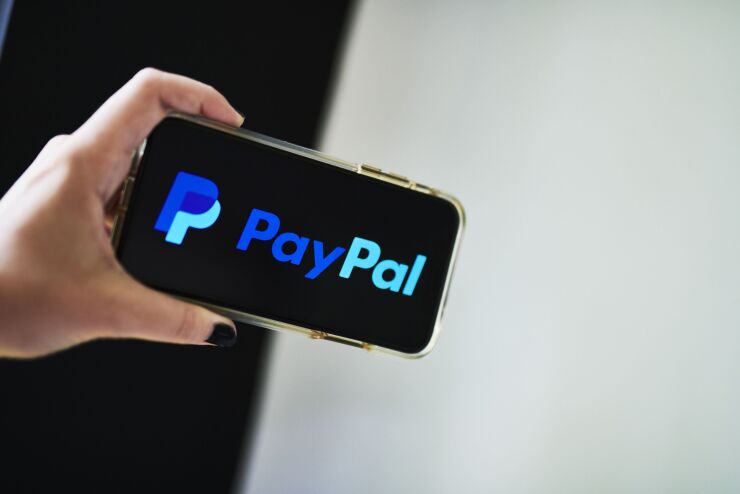
PayPal's stablecoin launched to a lot of fanfare, but thus far it has had tepid adoption from both traders and shoppers.
Called PYUSD, the stablecoin has a market capitalization of about $44 million, according to the first transparency report from
The low adoption of PYUSD shows that stablecoins are still far from the mainstream as a payment method, and that crypto traders aren't immediately attracted to a digital asset from a payments company.
PYUSD does not yet have a unique value proposition for crypto traders, who are the dominant stablecoin users, according to Alenka Grealish, principal analyst for financial services at Celent.
"Based on the traders' holdings, they have been satisfied with the top two stablecoins," Grealish said, referring to Tether's USDT and Circle's USDC.
Other uses for PYUSD, like P2P and cross-border payments, remain nascent, Grealish said, noting that there is a possible market for
"PayPal could potentially benefit from using PYUSD for internal cross-currency treasury operations," Grealish said.
A slow start for all stablecoins
Stablecoins are backed by traditional currency such as dollars or pounds, or U.S. Treasuries, as a hedge against the volatility of other cryptocurrencies. That has long made stablecoins a more likely cryptocurrency option for payments than bitcoin or ether.
But thus far, stablecoins and other digital assets such as NFTs and other cryptocurrencies are not widely used for payments outside of digital environments designed specifically for crypto, such as the
Stablecoins have struggled, particularly when the brand behind the stablecoin isn't a crypto company.
"PayPal's biggest challenge is: What are the compelling use cases?" said Eric Grover, a principal at Intrepid Ventures. "Where and why are existing digital payment systems woefully inadequate? Existing payment networks work well, have critical mass and are habit."
Even though PayPal is one of the world's largest and best-known payment companies, it's part of a crowded field in the stablecoin market. Coinmarketcap's trading board on Thursday included more than 100 stablecoins.
"So even though PayPal is a payment juggernaut, it doesn't have a Web3 reputation yet," said Brandon Zemp, a blockchain consultant and author. "So it will take some time to convince people that they have a 'better' stablecoin alternative."
PayPal's stablecoin adoption should pick up pace in the coming months and years. In the long run, PayPal will be able to onboard more people to its stablecoin simply because of its network and established payment rails, Zemp said.
"It'll be easier for people and will make more sense. But again, it takes time," Zemp said.
Scale with merchants and consumers
PayPal began work on a stablecoin
PYUSD launched in early August, and PayPal added PYUSD to Venmo this week.
"With Paxos' regulated infrastructure and PayPal's universal network of customers, merchants and partners, PYUSD has the opportunity to become the primary stablecoin for payments and trading globally," said Walter Hessert, head of strategy at Paxos, in an email. "The launch on Venmo makes the stablecoin seamlessly and freely available to tens of millions new customers, reinforcing the strength of the PYUSD ecosystem."
Investors' tepid embrace of PYUSD in its first month is in contrast to the much louder response from politicians.
Given that PayPal's stablecoin represents the beginning of an entirely new approach to retail payments, characterizing the growth and acceptance of it as "fast" or "slow" is premature at this point, said James Wester, director of cryptocurrency and co-head of payments and blockchain at Javelin Strategy & Research.
"PayPal will face some hurdles in acceptance and adoption of their stablecoin," Wester said. "That's to be expected given that most of PayPal's retail payment customers still need to learn what stablecoins are. It will take a while to get a better sense of how well that is working."
Paxos' transparency report said PYUSD was backed by $1.5 million in cash deposits and about $43 million in U.S. Treasuries, at the end of August. PYUSD's structure could help it, since stablecoins have run into trouble with regulators and politicians over the reserves backing the coins. Tether, for example, was
"If nothing else, this early PYUSD report is an important step in setting expectations for transparency," Wester said.






